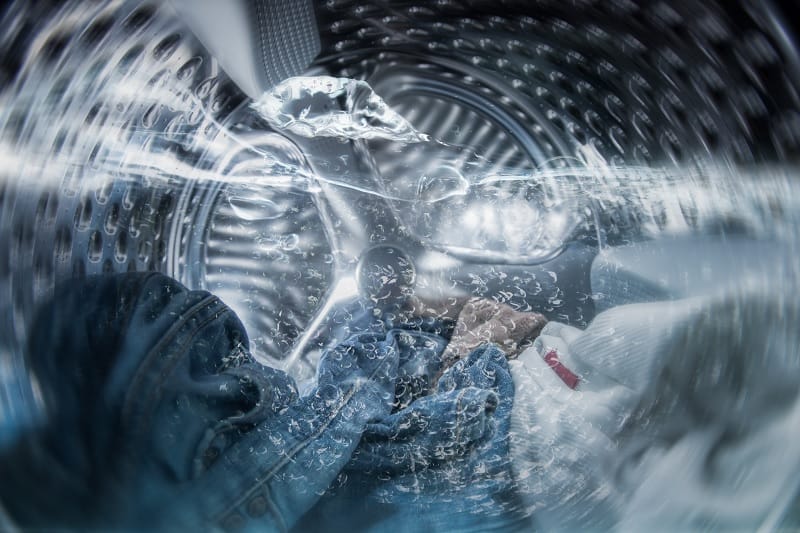Here in the UK, we are used to having most of our appliances either in the kitchen or in a utility room next to the kitchen.
So, why on earth would you even entertain the thought of putting a washing machine upstairs?
Interestingly, in a lot of other countries, this is actually quite common. Putting your washing machine upstairs can help save space, and even help you do the laundry quicker.
But is putting your washing machine upstairs all it’s cracked up to be? Read the pros and cons of having a washing machine on an upper floor to decide if it’s a good idea.
Pros of Having a Washing Machine Upstairs
There are a number of positives to having a washing upstairs in your home, check these pros out below:
1. It’ll save you time when doing the laundry
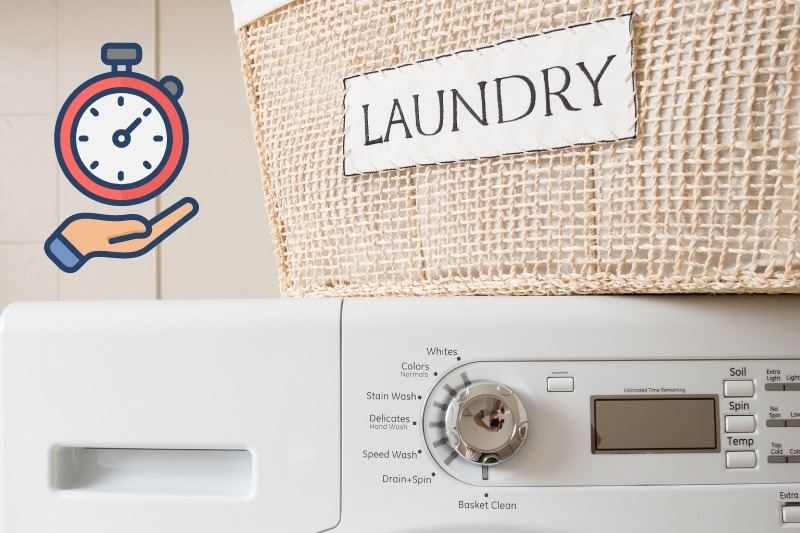
Arguably the biggest positive of having a washing machine upstairs is that you’ll be closer to the dirty laundry, so you can just throw it into the machine.
In theory, you should spend less time carrying the washing back and forth to your machine downstairs. This, in turn, frees up more time for you to do the things that matter most.
2. You can manage your laundry better
Having your washing machine upstairs not only saves you time, but it allows you to manage your laundry more effectively.
You can sort, wash, dry (if your tumble dryer is upstairs), re-sort and put away the laundry in a more organised manner.
Think about it, you’ll already be upstairs doing the laundry, so you just sort it and take it back to the right bedroom/cupboard. Everything is on the same level as you, and this’ll make things much easier for you.
Plus, as your washing is confined to one room, there’s less chance of a rogue sock going missing!
3. Frees up space in the other areas of the house
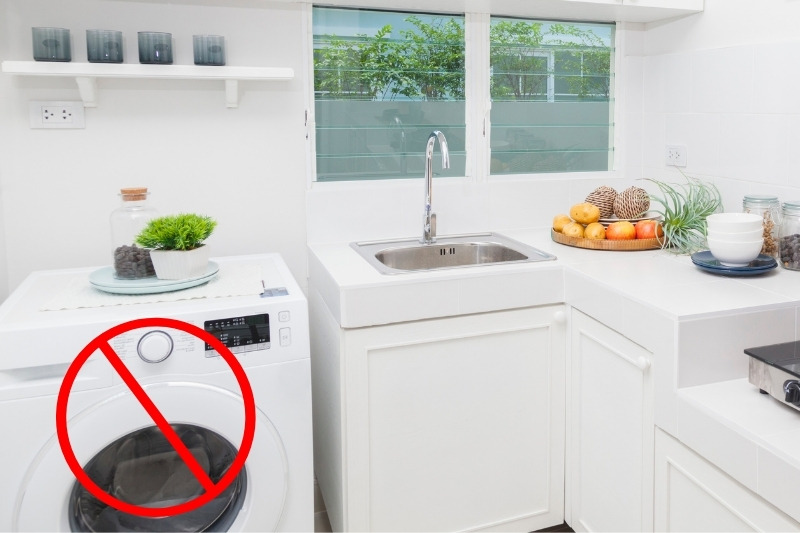
Here in the UK, we tend to keep our washing machines in the kitchen. This appliance is usually kept here because water and drainage outlets are normally in place, the floor is solid, and people have been doing this for years, so it’s like some kind of tradition.
However, if you put your washing machine upstairs, you could actually make more room in your kitchen for an extra cupboard or a new appliance, for example.
Kitchens aren’t exactly huge in a lot of homes these days, so having a tad more room may be what your kitchen needs. You may just make enough extra space to put that big American style fridge you’ve always wanted!
Cons of Having a Washing Machine Upstairs
While the pros above are appealing, you must also consider the negatives of having a washing machine upstairs, check the cons out below:
1. You may still have to carry your laundry around
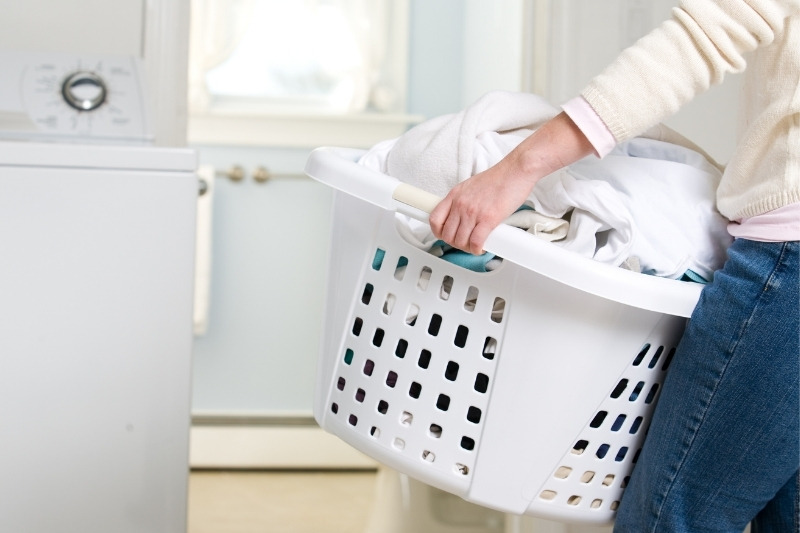
Just because your washing machine is upstairs, it doesn’t mean that you can dry your laundry upstairs as well. You might have to bring the laundry downstairs to pop it on the line.
Of course, if you have a tumble dryer upstairs as well, this eliminates this issue, but if you don’t, you’ll be drying clothes the old-fashioned way.
Naturally, if you have to bring your wet washing down the stairs to put it on the line, you’ll eventually have to unpeg the items, bring them in, sort them, and take them back up the stairs to put them away.
This isn’t exactly going to save you that much time in the long term. And you might as well have kept the washing machine downstairs (unless you had no option but to move it).
2. Washing machines can be noisy
Before you move a washing machine upstairs, consider how much noise your appliance makes.
Generally, modern washing machines don’t make too much noise, except when spinning, and the sounds that are made don’t usually bother people during the day.
That being said, if you like to run your washing machine at night, the sounds coming out of the appliance will be amplified by the silence of the night.
In turn, the gentle hum of the washing machine might be really annoying when you’re trying to sleep. It may wake your kids up and you might end up angering your neighbours.
So, consider how much noise pollution you may have to deal with, and find a way of dealing with it effectively, so you don’t bother those around you, if you’re set on putting your machine upstairs.
3. How do you get your washing machine upstairs?
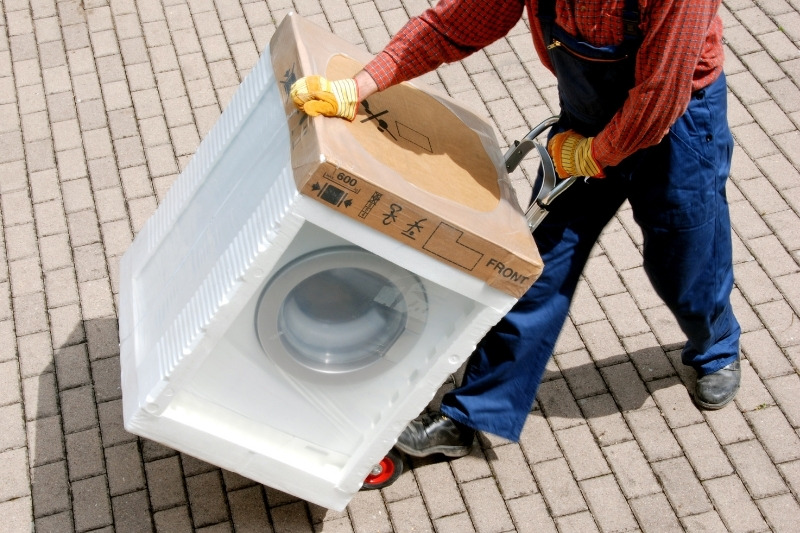
One of the biggest problems of having a washing machine upstairs is, how do you actually get the appliance upstairs in the first place.
Washing machines are heavy and bulky, and are generally tough to move about. And it’s not exactly a pleasant experience to drag a big appliance like this up a set of stairs.
Plus, one wrong move and you could end up seriously hurting yourself in the transportation process.
So, before you go shifting your washing machine around, think about the logistics side of things!
If you think it’s going to be too much work moving the washing machine, and it’s okay where it is, it might be better to leave it where it’s housed anyway.
Of course, if you do some online research into moving washing machines upstairs, you’ll hear about some individuals who manage to lug such an appliance up the stairs on their own.
The fact is, they’ve usually got the right tools to start off with and, in some cases, they’ve got experience in lifting such appliances.
If this’ll be your first time taking a washing machine upstairs, it’ll be a testing and tricky time for you, and things might not run as smoothly as they did in the tutorial video you watched.
One of the first things you’ll need to do is get help. Ideally, you need two people to move a washing machine upstairs.
You might also need to source some tools for the job, such as a dolly, cords/straps and stair tracks to help pull the appliance up the steps.
When you’re all set, you can start to move the appliance. But if you have trouble, you should stop and call an extra person for help, or you could do an online search to find a professional in your area that specialises in moving heavy items. This would, of course, cost you money!
4. Vibrations can be heard through the floor
Washing machines shake and vibrate as they complete their cycles, it’s not a huge problem if the appliance is resting on a solid, preferably concrete floor.
However, if you’ve put your washing machine on a wooden floor, or maybe just on the floorboards upstairs, you’ll end up with a lot of disturbing noise coming out of the machine as it vibrates its way through the cycles.
The vibrations over a period of time could also cause damage to the flooring/floorboards to the point where they’re no longer safe.
In this case, you need to make sure that the floor is reinforced and can take the weight of a vibrating washing machine, and you need to put some sound proofing material down to stop the helicopter-like sound from reverberating around your home.
This could be seriously annoying for you and also for your neighbours!
5. Leaks and damage to the floor can be an issue

Leaks happen whether the washing machine is upstairs or downstairs. The problem with having a leaking washing machine upstairs is that the water can get into and rot the flooring, floorboards and any joists keeping the room intact.
Downstairs, a leaking washing machine is most likely sitting on a hard floor that has concrete beneath it, so the water is easier to clear away, and may not cause too much damage.
If your washing machine leaks upstairs and you don’t notice it, the wood will eventually become weaker and weaker, and will ultimately need replacing. This, in turn, can be expensive work.
So, if you’re set on having a washing machine upstairs, make sure you action some preventative measures, like popping a drip tray such as this one available on Currys.co.uk under the washing machine to catch leaking water or reinforcing the floor so it’s stronger, before using the appliance.
6. You need space
It may sound like a good idea to have a washing machine upstairs, but you’ve got to have plenty of room first and foremost!
At a minimum you need to have room for the following:
- The machine itself – You’ve got to have enough room to fit the machine in properly. If the machine is sticking out, it’s just going to be a hazard. Plus, you’ve got to make sure the pipework behind the machine is fitted properly and has enough room. If not, you could end up with a leak, for example.
- Space for potential maintenance work to be done – You might have to call an engineer out, so the last thing you want is for them to feel boxed in, with limited room to actually fix your machine.
- You have to be able to clean the machine – Washing machine cleaning is essential. If you can’t get to certain parts of the appliance to clean them, you won’t be able to maintain the appliance properly.
- You need enough room to use the machine effectively – You need to be able to open the door wide enough and you must be able to slot your detergent into the drawer. If you can’t do these basic things, you obviously haven’t given your machine enough space.
It’s probably not a good idea to have the washing machine upstairs if you’re having trouble with any of the above.
7. Getting new outlets and an electricity socket fitted costs money
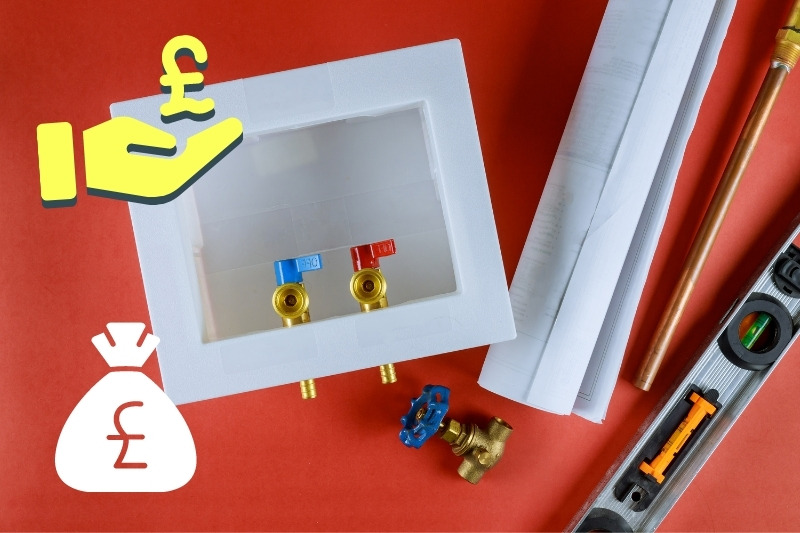
You might not have a cold-water supply or a waste water outlet upstairs, so before you put a washing machine upstairs, you have to get these fitted by a certified plumber. This would be an additional cost that you’d need to cover.
You’ll also need a power socket near the washing machine to power it up. Again, if you don’t have one of these at hand, you’ll have to call someone in to fit one for you. This is another cost to think about.
On the topic of electricity sockets, if you’re going to put your washing machine in a bathroom, you can’t just stick new electricity sockets wherever you like because you’ve got to adhere to UK electrical regulation standards.
You need to have a gap of at least 3 metres between an electrical socket and a bath/shower.
If you don’t have sufficient room in your bathroom, you won’t be able to fit a socket, so you won’t be able to house a washing machine in there anyway.
Of course, you can fit outlets and electrical points in other rooms, excluding the bathroom, just be careful about where you put these outlets. You don’t want to squash a vibrating washing up next to a gas boiler, for example.
A plumber/ electrician should be able to advise you further on these matters.
Is It Ok to Have a Washing Machine Upstairs?
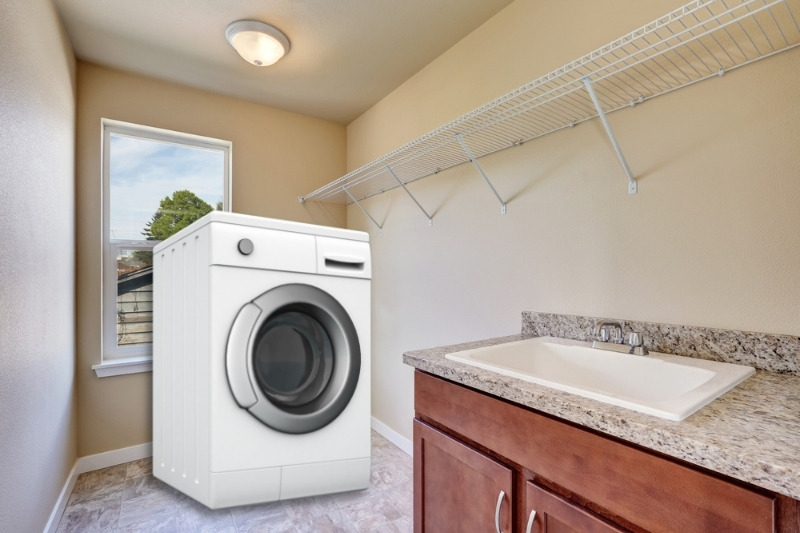
It’s not uncommon for people to put washing machines upstairs. In fact, people who live in blocks of flats have been using washing machines in their homes for years! And people in Europe have been doing this for ages!
However, before you commit to putting a washing machine upstairs you do need to weigh up the pros and cons.
The positives of doing so are that you’ll save more time when doing laundry, you can manage your laundry better, and you can free up some space downstairs to store a new appliance!
On the flipside, having a washing machine upstairs isn’t always going to save you time, it can be costly to fit the right outlets for a washing machine, the appliance can be noisy and heavy and this racket can bother a lot of people, and getting such a large appliance up a stairway isn’t exactly easy!
But if you can find a way to work around all of these drawbacks, there’s no reason why you couldn’t safely move your washing machine upstairs and use it effectively.
How Do You Move a Washing Machine Upstairs?
To move a washing machine up a set of stairs you need two people, a dolly, some straps and some tracks for the stairs.
You need to pop the washing machine onto the dolly, strap it in place and then you can pop the tracks on the stairs.
Once you’ve done this you can slide the dolly onto the tracks, then one person needs to hold the dolly at the bottom, and the other person needs to hold the dolly’s handle.
Once everyone is in place, you can start moving the washing up the stairs, carefully and slowly!
To see this in action, check out the video below!

Bethan has a passion for exploring, reading, cooking and gardening! When she’s not creating culinary delights for her family, she’s concocting potions to keep her house clean!





